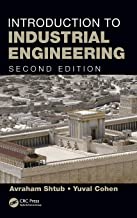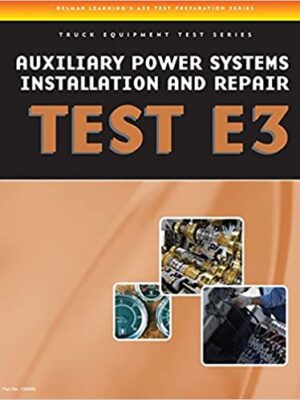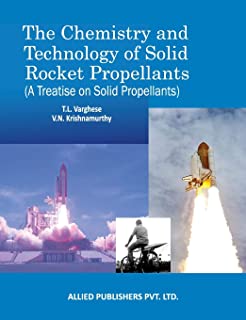Introduction to Industrial Engineering
Original price was: ₹16,155.00.₹12,924.00Current price is: ₹12,924.00.
ISBN: 9781498706018
Author/Editor: Avraham Shtub
Publisher: CRC Press
Year: 2016
1 in stock (can be backordered)
Description
A Firsthand Look at the Role of the Industrial Engineer
The industrial engineer helps decide how best to utilize an organization’s resources to achieve company goals and objectives. Introduction to Industrial Engineering, Second Edition offers an in-depth analysis of the industrial engineering profession. While also providing a historical perspective chronicling the development of the profession, this book describes the standard duties performed, the tools and terminologies used, and the required methods and processes needed to complete the tasks at hand. It also defines the industrial engineer’s main areas of operation, introduces the topic of information systems, and discusses their importance in the work of the industrial engineer.
The authors explain the information system concept, and the need for integrated processes, supported by modern information systems. They also discuss classical organizational structures (functional organization, project organization, and matrix organization), along with the advantages and disadvantages of their use. The book includes the technological aspects (data collection technologies, databases, and decision-support areas of information systems), the logical aspects (forecasting models and their use), and aspects of principles taken from psychology, sociology, and ergonomics that are commonly used in the industry.
What’s New in this Edition:
The second edition introduces fields that are now becoming a part of the industrial engineering profession, alongside conventional areas (operations management, project management, quality management, work measurement, and operations research). In addition, the book:
Provides an understanding of current pathways for professional development
Helps students decide which area to specialize in during the advanced stages of their studies
Exposes students to ergonomics used in the context of workspace design
Presents key factors in human resource management
Describes frequently used methods of teaching in the field
Covers basic issues relative to ergonomics and human-machine interface
Introduces the five basic processes that exist in many organizations
Introduction to Industrial Engineering, Second Edition establishes industrial engineering as the organization of people and resources, describes the development and nature of the profession, and is easily accessible to anyone needing to learn the basics of industrial engineering. The book is an indispensable resource for students and industry professionals.
Additional information
| Weight | 0.74 kg |
|---|
Product Properties
| Year of Publication | 2016 |
|---|---|
| Table of Contents | Introduction Educational Goals Definitions and Examples Related to Industrial Engineering Models Teaching Industrial Engineering Historical Overview The Impact of Globalization on the Industrial Engineering Profession Industrial Engineering and Systems Industrial Engineering and Process Design The Need for Integrated and Dynamic Processes Summary References Modeling the Organizational Structure and the Facility Layout Educational Goals Introduction What Is an Organization? Development of Organizations Examples of Organizational Structures Organizing Workplace Equipment and Machinery Organization-Wide Processes Summary References Project Management Educational Goals Introduction Project Initiation Project Scheduling The Implementation Phase-Project Execution Monitoring and Control References Information Systems Educational Goals Introduction Components of the Information System Quality of Information Forecasting References Supply Chain Management: The Interface with the Customer Educational Goals Introduction to the Customer Interface and Its Design The Impact of Inventory Bill of Materials The Master Production Schedule Delivery Time and Time-Based Competition Avoiding Unnecessary Activities Shortening the Duration of Value Added and Necessary Activities Quality-Based Competition Cost-Based Competition Summary References The Interface with Suppliers and Subcontractors Procurement as a Way to Gain a Competitive Advantage Purchasing From an External Source: The "Make or Buy" Decisions Introduction to Suppliers Management Selecting the Right Suppliers Managing the Process: Contract Management E-commerce and Supplier Management Inventory Management: Cost/Benefit Considerations The Benefits of Inventories Costs Related to Inventory Inventory Management Models and the Assumptions on Which They Are Based Summary References Scheduling Introduction to Operational Scheduling Single-Machine Scheduling Scheduling the Job Shop Schedule Control Flow Shop Scheduling Applying the JIT Philosophy in Scheduling The Theory of Constraints and the Drum Buffer Rope Approach to Scheduling References Streamlining the Transformation Process: Material Requirements Planning Systems The Need for Material Requirements Planning The Basic MRP Record Input Data and Data Quality Issues Capacity Considerations: The Evolution of MRP2 Systems Using the MPS for Available to Promise Analysis Lot Sizing Considerations Uncertainty and Buffering Considerations MRP as a Predecessor of the ERP Summary References Enterprise Resource Planning Educational Goals Introduction Functionalities and Components of ERP Systems The Database and the Model Base Business Intelligence Process Design and Reengineering ERP Implementation Projects References The Human Factor Educational Objectives Introduction History Ergonomics Motoric Tasks Body Posture Access and Space Design Anthropometry Workload Lifting and Exertion in the Workplace Workplace Environmental Factors Specialization and the Development of Workers' Medical Problems Design Flexibility Cognitive Tasks Key Elements in Work Environment Design Human Resources Management Summary References Introduction to Supply Chain Management Educational Goals Introduction Background: Terms, Definitions, and Historic Overview Supply Chain Characteristics Major Characteristics and Considerations in Supply Chain Planning Types of Contracts and Engagements Information and Its Importance Designing the Supply Chain Supply Chain Monitoring and Control Management Summary References Introduction to Service Engineering Educational Goals Introduction Service Processes Classification of Service Systems Key Characteristics and Considerations in Designing Service Systems Introduction to Queuing Systems Main Service Disciplines Service System Simulation General Approach to Planning Number of Service Personnel Rush Hours and Their Importance Feedback: Customer Satisfaction Surveys Summary References |
| Author | Avraham Shtub |
| ISBN/ISSN | 9781498706018 |
| Binding | Hardback |
| Edition | 2 |
| Publisher | CRC Press |
You must be logged in to post a review.






Reviews
There are no reviews yet.